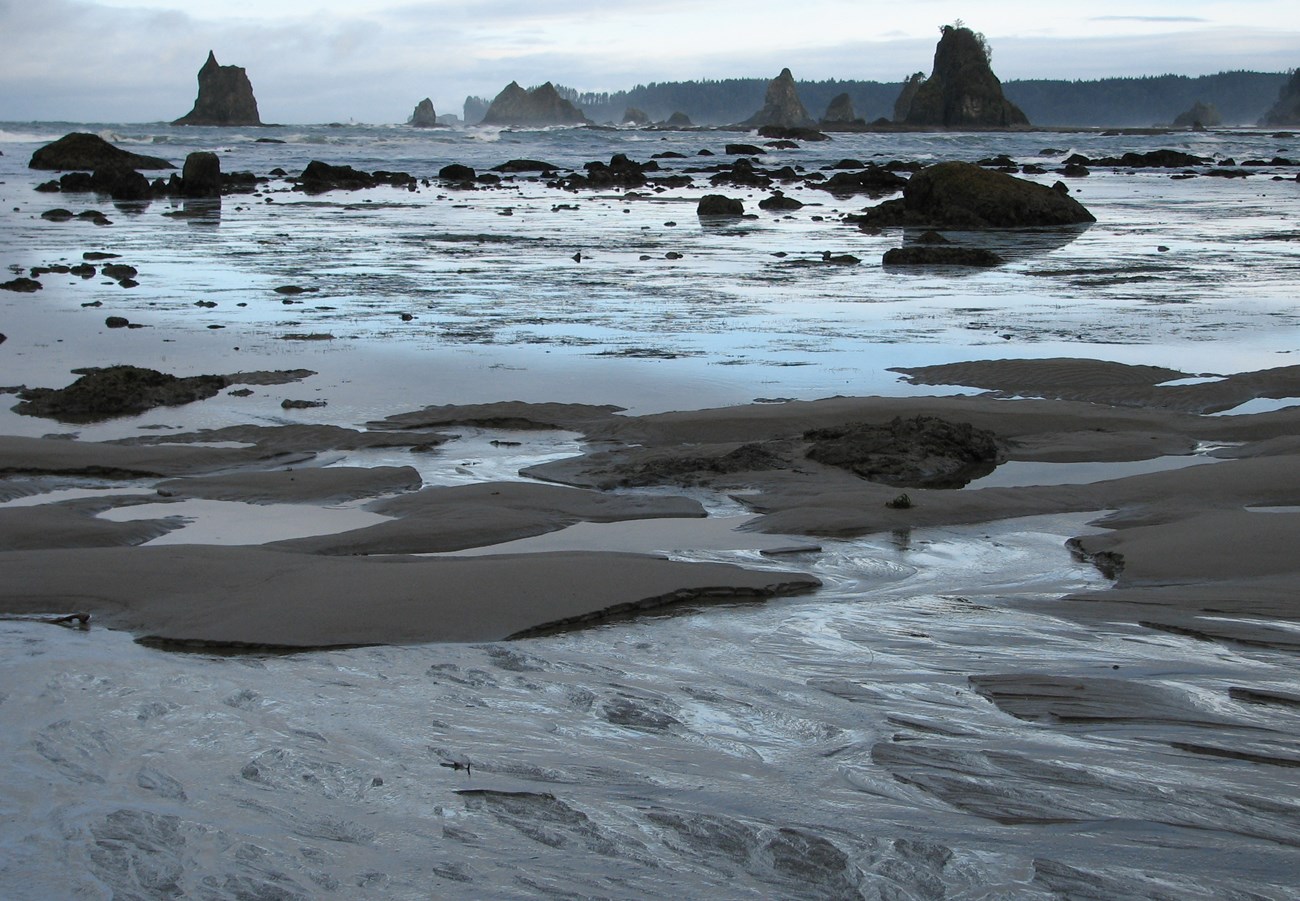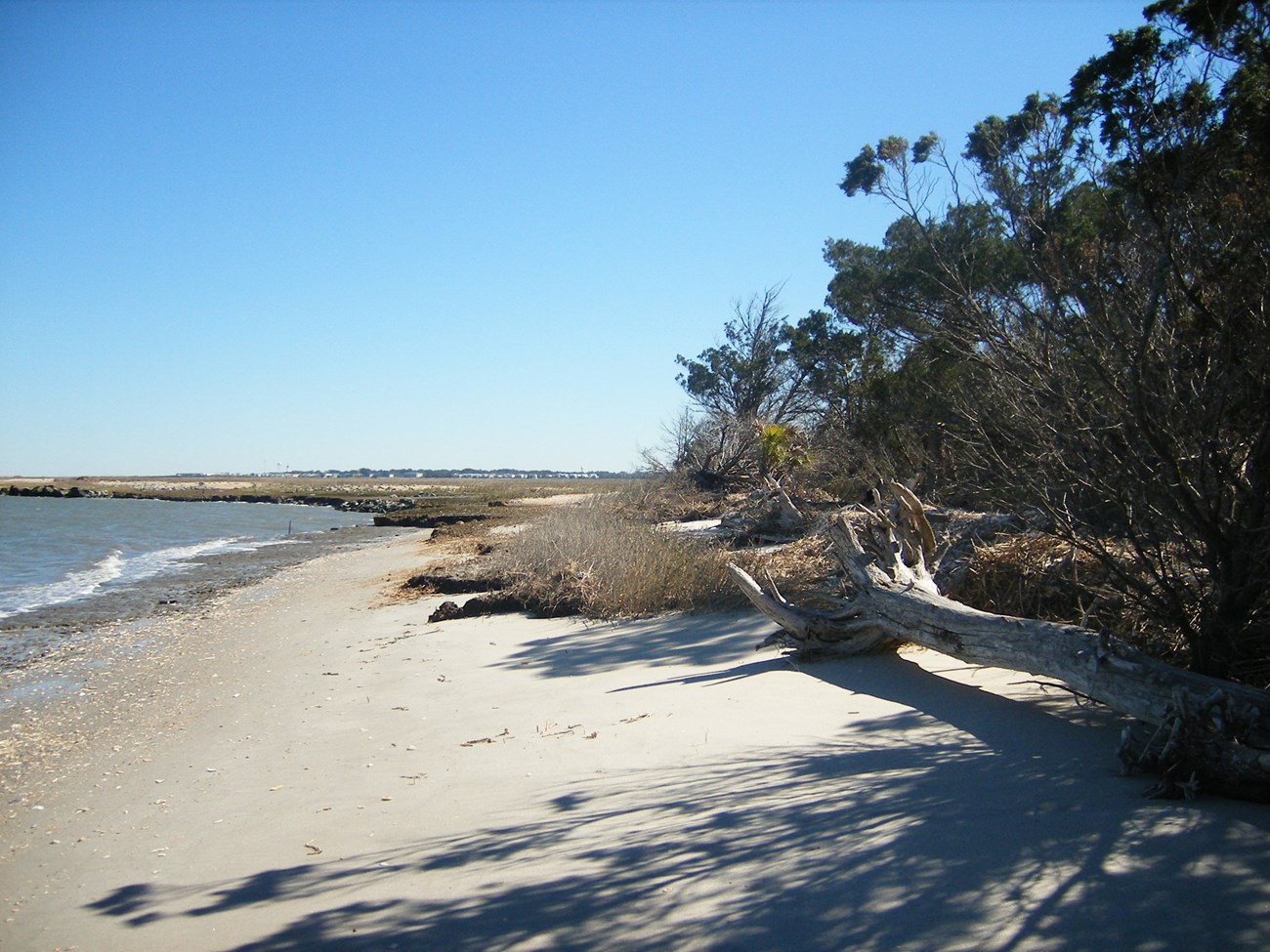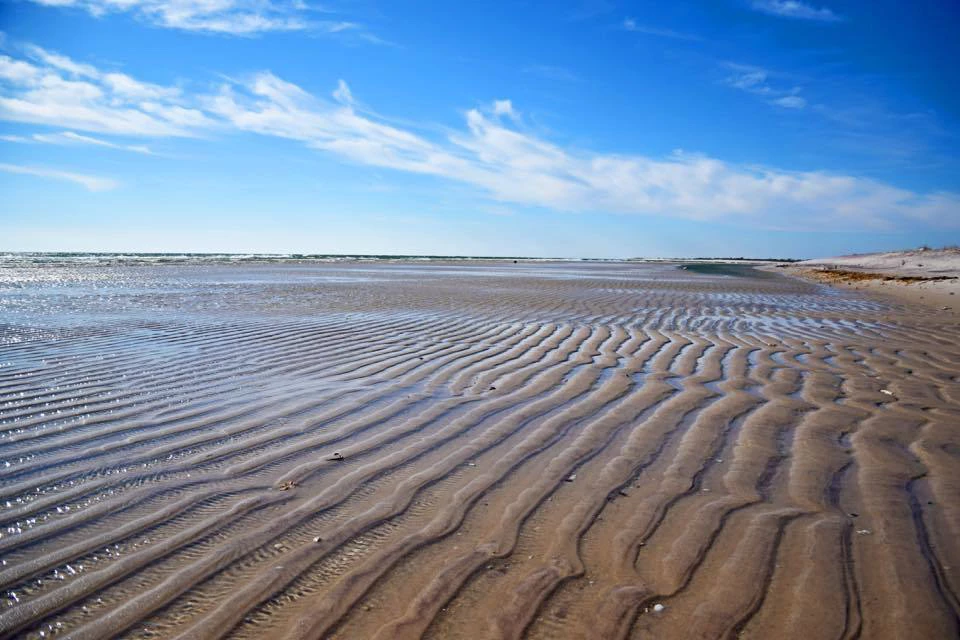Part of a series of articles titled Coastal Processes.
Previous: Coastal Processes—Waves
Article

NPS photo.
Tides result from the gravitational attraction exerted on ocean water by the Moon and the Sun. Because the Moon is closer to Earth, it has more than twice the gravitational effect of the distant Sun, despite the immense size and mass of the Sun. The motions of Earth, Moon, and Sun with respect to one another produce semi-diurnal tides along most coasts in which there are two lows and two highs approximately every 24 hours. Tides higher than normal, known as spring tides, occur every 14 - 17 days when the Sun and Moon are aligned. In between these periods, lower than normal—or neap tides—occur when the Sun and Moon are positioned at an angle of 90° with respect to Earth. Spring and neap tides involve deviations of about 20% above and below normal tidal range. When coupled with rises in sea level, certain spring tides can cause nuisance flooding events.
Several factors complicate this general picture, including the size, depth, and topography of ocean basins (bathymetry), shoreline configuration, and meteorological conditions. Much of the Pacific coast, for instance, experiences a regime of mixed tides in which highs and lows of each 24-hour period are of different magnitudes. Other coastlines, such as much of Antarctica, have diurnal tides with only one high and one low per 24 hours.

NPS Photo.
Although contrasts between tidal types are important in some coastal processes, tidal range is of much greater overall geomorphic significance. The most extreme ranges occur where coastal configuration and submarine topography induce an oscillation of water in phase with the tidal period. This effect is particularly pronounced in the Bay of Fundy, an inlet of the Atlantic Ocean in southeastern Canada, where the typical tidal range is more than 50 feet (16 m).
Tidal range and type are important for several reasons. Tidal type determines the interval between tides and therefore the time available for the shore to dry after high tide, which is significant for shoreline weathering processes and biological activity. Additionally, tidal type affects the intensity of tidal currents since, for a given tidal range, the velocity of water movement will be greater in semi-diurnal regimes than for mixed or diurnal types because a shorter interval between high and low tides occurs. This effect is particularly important in narrow coastal embayments where tidal flows are concentrated. Tidal range is important because it controls the vertical distance over which waves and currents are effective in shaping shorelines, and in conjunction with the slope of a shoreline, tidal range determines the extent of the intertidal zone, that is, the area between high and low tide (Summerfield 1991).

NPS Photo.
Part of a series of articles titled Coastal Processes.
Previous: Coastal Processes—Waves
Last updated: March 8, 2019